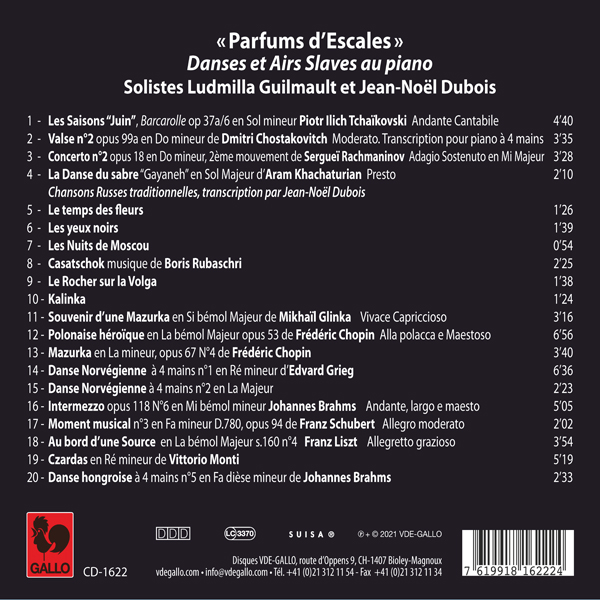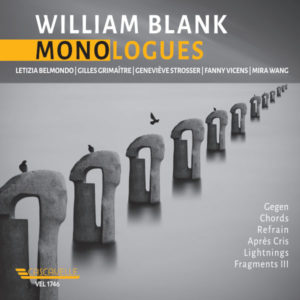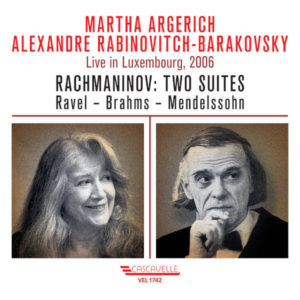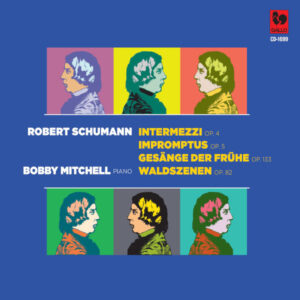Extraits / Excerpts
DÜFTE VON ZWISCHENSTOPPS, TÄNZEN UND SLAVIC AIRS AM KLAVIER - LUDMILLA GUILMAULT - JEAN-NOËL DUBOIS
Escales Perfumes around the tunes and dances slavs.
Pyotr Iliyich TCHAIKOVSKY: The Seasons Op. 37a, TH 135: No. 6, June (Barcarolle) – Dmitri SHOSTAKOVICH: The Second Waltz Op. 99a (Arr. By Jean-Noël Dubois) (Four Hands) – Sergei RACHMANINOFF: Piano Concerto No. 2 in C Minor, Op. 18: II. Adagio Sostenuto – Aram KHACHATURIAN: Gayaneh: Sabre Dance – Traditional: Le temps des fleurs (Arr. By Jean-Noël Dubois) – Les yeux noirs (Arr. By Jean-Noël Dubois) – Les nuits de Moscou (Arr. By Jean-Noël Dubois) – Casatchok (Arr. By Jean-Noël Dubois) (Four Hands) – Le Rocher sur la Volga (Arr. By Jean-Noël Dubois) – Kalinka (Arr. By Jean-Noël Dubois) (Four Hands) – Mikhaïl GLINKA: Souvenir d’une Mazurka in B-Flat Major: Vivace Capriccioso – Frédéric CHOPIN: Polonaise in A-Flat Major, Op. 53 „Heroic“ – Mazurka No. 47 in A Minor, Op. 67, No. 4 – Edvard GRIEG: 4 Norwegian Dances, Op. 35: I. Allegro marcato (Four Hands) – 4 Norwegian Dances, Op. 35: II. Allegro tranquillo e grazioso (Four Hands) – Johannes BRAHMS: 6 Piano Pieces, Op. 118: No. 6, Intermezzo in E-Flat Minor – Franz SCHUBERT: 6 Moments Musicaux, Op. 94, D. 780: III. Allegro moderato – Franz LISZT: Années de Pèlerinage I, S. 160: 4. Au bord d’une source – Vittorio MONTI: Czàrdàs (Four Hands) – Johannes BRAHMS: Hungarian Dance No. 5 in G Minor, WoO 1: No. 5. in F-Sharp Minor (Four Hands).
Ludmilla Guilmault & Jean-Noël Dubois, Piano. https://www.ludmilla-guilmault.com/
Presentation of the Album Escales Perfumes around the tunes and dances slavs. Ludmilla Guilmault and Jean-Noël Dubois piano solo & four hands.
The music of peoples has always inspired the greatest composers.
Slavic people are peoples who speak the various Slavic languages of the larger Balto-Slavic linguistic group of the Indo-European language family. They are native to Eurasia, stretching from Central, Eastern and Southeastern Europe all the way north and eastwards to Northeast Europe, Northern Asia (Siberia) and Central Asia (especially Kazakhstan and Turkmenistan), as well as historically in Western Europe (particularly in Eastern Germany) and Western Asia (including Anatolia). From the early 6th century they spread to inhabit most of Central, Eastern and Southeastern Europe. The proliferation of this culture will become fertile ground for the blossoming of musical nuggets.
The Slavic soul, an impalpable identity uniting popular music with scholarly music…
Music touches us, transports us, sometimes lifts our soul.
We have chosen to travel, taking you with us on tour.
Dear listeners, welcome aboard the Trans Europe-express. Captain Jean-Noël Dubois accompanied by his charming hostess Ludmilla Guilmault are happy to welcome you aboard the Bösendorfer Impérial. You will be able to appreciate the harmonic richness of this entirely artisanal piano made in Austria and tuned in pure fifth. *
We will take off from Russia to land in Hungary, birthplace of Franz Liszt and György Cziffra. You will be able to admire the Dances, the Waltzes, the Mazurkas, the Impromptus, the Poles, and famous traditional Russian songs. We will pass through Poland, Norway, Germany and Switzerland…
Ludmilla and I wish you a pleasant journey. To fully enjoy the scents, hi-fi headphones are recommended (!)
- Kategorien
- Komponisten
- Interpreten
- Booklet













